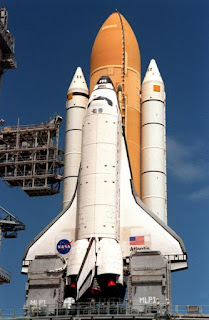 As I already said ISRO is proud of PSLV in the same way NASA is proud of Space Shuttles.Of course, now NASA ended working on space shuttles.Space shuttles have great history of 30 years(1981-2011).But due to increased complexity and cost NASA stopped working on it.NASA is trying for most advanced crew vehicles by which cost reduces to a great extent.Of course, NASA faced ups and downs with space shuttles.It lost two shuttles named Columbia and Challenger.We lost Kalpana Chawla during the disaster of Columbia on1st Feb,2003.At last NASA ended its space shuttle program after successful mission of Atlantis and by giving the statement
As I already said ISRO is proud of PSLV in the same way NASA is proud of Space Shuttles.Of course, now NASA ended working on space shuttles.Space shuttles have great history of 30 years(1981-2011).But due to increased complexity and cost NASA stopped working on it.NASA is trying for most advanced crew vehicles by which cost reduces to a great extent.Of course, NASA faced ups and downs with space shuttles.It lost two shuttles named Columbia and Challenger.We lost Kalpana Chawla during the disaster of Columbia on1st Feb,2003.At last NASA ended its space shuttle program after successful mission of Atlantis and by giving the statement"Space shuttles changed the way we view our world and we view ourselves "
Space shuttle during launch (left one) and the craft which come back to earth(rigth one)









